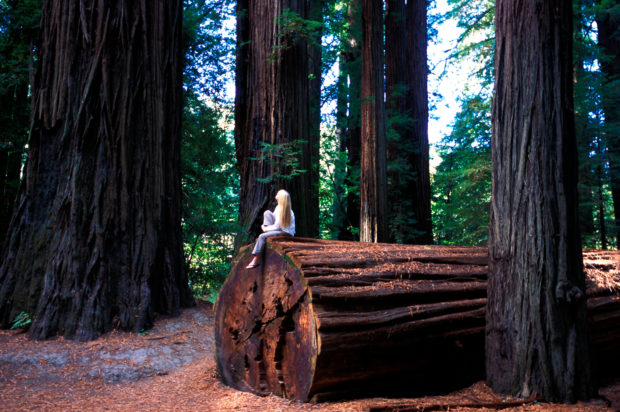A $5,000 Reward Is Being Offered For Any Information That Leads To The Prosecution Of Historic Redwood Poachers

Redwood National Park in Northern California is home to some of the oldest coastal redwood trees in the world.
They are over two thousand years old, with trunks that reach over three hundred and fifty feet in the air. One mature tree alone can grow to be over twenty feet in diameter.
But, the historic trees are also endangered. More well-known threats facing this species include climate change, deforestation, and fires.
A lesser-known crime against the trees, though, is burl poaching.
During 1848, migrators of the California Gold Rush contributed to extensive redwood logging in an effort to build up San Francisco and other surrounding cities, according to the National Park Service.
What was once a forest of two million acres was decimated by ninety-six percent.
Since then, the extremely valuable trees have been highly sought after by poachers. Redwood burls– or external growths on the trees– are “prized for their intricately patterned wood that can weigh hundreds of pounds and bring in thousands of dollars,” mentioned Save The Redwoods.
But, this practice is extremely harmful to the decreasing historic redwoods for two reasons. First, Redwood burls are full of the species’ stem cells. In turn, these growths are extremely important for the regeneration of coastal Redwoods.
Moreover, poachers often use chainsaws to illegally cut the burls from live trees. This exposes the interior heartwood and may prevent the tree from reproducing.

SMP – stock.adobe.com – illustrative purpose only, not the actual person
Sign up for Chip Chick’s newsletter and get stories like this delivered to your inbox.
“Burl poaching not only scars our prized redwood parks but may have lasting impacts on wildlife– including threatened and endangered species,” Save The Redwoods explained.
Historic Redwoods provide rare and vital habitats that, when torn down, further endanger northern California’s ecosystem.
And over the past decade, authorities at Redwood National and State Parks have seen poaching rapidly increase.
In turn, the park has installed motion detectors, cameras, and other technology in hopes of catching poachers on the scene.
Additionally, the Save The Redwoods League, in collaboration with the Redwood Parks Association, has launched a five thousand dollar reward program for any information that leads to the prosecution of burl poachers.
To get in touch with the league or report an incidence of poaching, you can call (888) 836-0005 or visit their website linked here.
If true crime defines your free time, this is for you: join Chip Chick’s True Crime Tribe.
This Woman Booked An Airbnb In Bali That Turned Out To Be An Abandoned Building
This Study Confirmed That Imposter Syndrome Is Real And Can Be Detrimental To Mental Health
More About:Human Interest